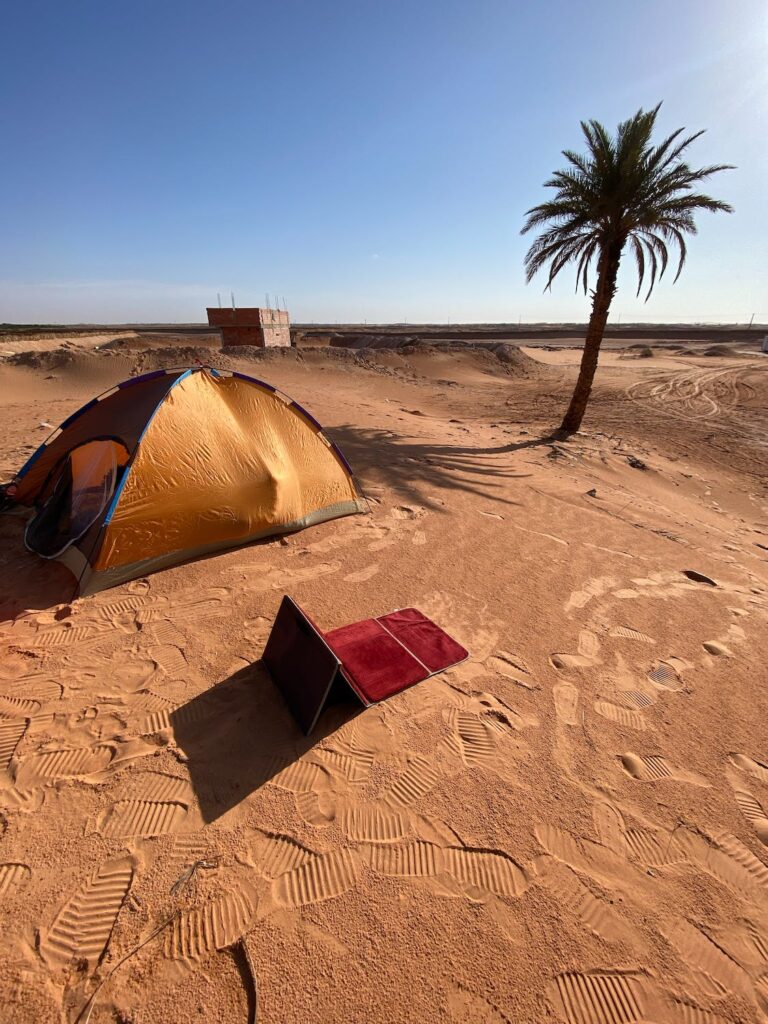Introduction
When faced with extreme weather conditions, proper preparation and knowledge can mean the difference between life and death. From blistering heatwaves to bone-chilling blizzards, Mother Nature can be relentless. It is crucial to have a plan in place and be equipped with the necessary skills and tools to navigate through these challenging situations.
In this article, we will explore some essential tips for surviving extreme weather conditions. By following these guidelines, you can increase your chances of staying safe and secure when the elements are at their worst.

Surviving the Scorching Heat
Extreme heat can be incredibly dangerous, leading to dehydration, heat exhaustion, and even heatstroke. Whether you find yourself in a desert or experiencing a heatwave in an urban setting, the following tips will help you stay cool and protected:
Stay Hydrated
One of the most important factors in surviving extreme heat is staying hydrated. Carry a sufficient supply of water with you at all times and drink regularly, even if you do not feel thirsty. Dehydration can sneak up on you, so it is vital to replenish your fluids frequently.
Seek Shade and Cool Areas
When the sun is scorching, it is vital to find shade and cool areas to prevent overheating. Look for natural shade under trees or create temporary shelter using tarps or umbrellas. If you are indoors, close your blinds or curtains to keep the sun’s rays out and use fans or air conditioning to maintain a comfortable temperature.
Dress Appropriately
Wearing loose, lightweight, and light-colored clothing can help you beat the heat. Opt for fabrics that are breathable and allow air circulation. Additionally, wearing a wide-brimmed hat and sunglasses can protect your face and eyes from the sun’s intense rays.
Limit Physical Activity
During extreme heat, it is crucial to limit physical exertion, especially during peak daytime temperatures. If you must engage in outdoor activities, plan them for early morning or evening when the temperature is cooler. Pace yourself and take frequent breaks to rest and rehydrate.
Be Mindful of Signs of Heat-Related Illnesses
It is essential to be aware of the signs of heat-related illnesses, such as dizziness, nausea, rapid heartbeat, confusion, or fainting. If you or someone around you exhibits these symptoms, seek medical attention immediately. Acting quickly can prevent a minor issue from escalating into a life-threatening emergency.
6. Stay Informed
Keep an eye on weather forecasts and stay informed about heat advisories or warnings issued by local authorities. This information can help you plan your activities accordingly and make informed decisions about your safety.
By following these tips, you can significantly increase your chances of surviving extreme heat and minimize the risk of heat-related illnesses. Remember, staying hydrated, finding shade, and being mindful of your body’s signals are crucial in hot weather survival. In the next part of this article, we will explore strategies for surviving freezing temperatures and harsh winter conditions.
Essential Gear for Extreme Weather Survival
Layered Clothing
When it comes to surviving extreme weather conditions, having the right gear is crucial. One of the most important aspects of your gear is your clothing. Layered clothing is essential for staying warm and protecting yourself from the elements. Start with a moisture-wicking base layer to keep your skin dry. Add an insulating layer to trap heat and regulate body temperature. Finally, top it off with a waterproof and windproof outer layer to shield yourself from rain, snow, and harsh winds.
Insulated Footwear
Your feet are susceptible to frostbite and hypothermia in extreme cold weather, so investing in insulated footwear is a must. Look for boots that are waterproof, breathable, and have a thick insulation layer. Insulated boots will keep your feet warm and dry, preventing frostbite and ensuring your mobility in treacherous conditions.
Waterproof and Windproof Shelter
In extreme weather conditions, having a reliable shelter can make all the difference in your survival. A waterproof and windproof tent or emergency shelter should be part of your essential gear. Look for a shelter that is easy to set up and provides adequate protection from rain, snow, and wind. Additionally, carry a tarp or a waterproof groundsheet to create an extra layer of insulation between you and the ground.
High-Quality Sleeping Bag
A high-quality sleeping bag is essential for staying warm during cold nights. Look for a sleeping bag that is rated for the lowest temperature you expect to encounter. Choose one with a hood for added warmth and insulation. Additionally, consider a sleeping bag with a water-resistant shell to keep you dry in case of rain or wet conditions.
Fire-Starting Tools
Being able to start a fire is crucial for survival in extreme weather conditions. Fire provides heat, light, and a way to cook food and purify water. Carry waterproof matches, a lighter, or a fire starter kit in your gear. Additionally, pack some fire accelerants like dry leaves, newspaper, or firestarter cubes to help you get the fire going quickly, even in wet conditions.
Navigation Tools
Navigating through extreme weather conditions can be challenging, and getting lost can be life-threatening. Carry a compass and a topographic map of the area you plan to explore. Additionally, consider using a GPS device or smartphone app with offline maps. These tools will help you stay on track and find your way back to safety.
Emergency Food and Water
In extreme weather situations, it may be difficult to find food and clean water. Pack lightweight, non-perishable food items that are high in calories and provide essential nutrients. Energy bars, dried fruits, nuts, and jerky are good options. Additionally, carry a water filtration system or water purification tablets to ensure a safe water supply. Remember to also have a sturdy water bottle or hydration pack to carry water with you.
Staying Safe in Extreme Heat
Protecting Yourself from the Sun
When facing extreme heat, it is crucial to protect yourself from the sun’s harmful rays. Start by wearing lightweight and loose-fitting clothing that covers as much skin as possible. Opt for light colors that reflect sunlight rather than absorb it. Sunscreen is your best friend in these conditions. Apply a broad-spectrum sunscreen with a high SPF (sun protection factor) to all exposed skin, and reapply it every two hours or after excessive sweating or swimming.
Staying Hydrated
Dehydration is a serious concern in extreme heat. Drink plenty of water throughout the day, even if you don’t feel thirsty. Hydration is key to maintaining your body’s temperature and overall well-being. Avoid alcoholic and caffeinated beverages as they can dehydrate you further. If you’re engaging in physical activity, consider using electrolyte-enhanced drinks to replenish essential minerals lost through sweat.
Seeking Shade and Cool Environments
During extreme heat, it’s essential to find shade and cool environments whenever possible. If you’re outdoors, look for shaded areas like trees or buildings. Creating shade using umbrellas or tarps can also provide relief. If you’re indoors, make use of air conditioning or fans to cool down. Limit your time spent outside during the hottest parts of the day, typically between 10 am and 4 pm.
Conclusion
Surviving extreme weather conditions requires preparedness, knowledge, and adaptability. Whether you find yourself in frigid cold or scorching heat, these tips can help you stay safe and resilient. Remember to stay informed about weather conditions, create a survival kit, and prioritize safety above all else.
In extreme cold, dress in layers to trap body heat, insulate your body from the ground, and be mindful of signs of frostbite and hypothermia. When facing extreme heat, protect yourself from the sun, stay hydrated, and seek shade and cool environments.
Always remember that surviving the elements is a matter of being aware, prepared, and adaptable. By following these guidelines and incorporating other safety measures specific to your location and situation, you can increase your chances of safely navigating extreme weather conditions.
Stay safe and be prepared – because Mother Nature can be unpredictable.

Recent Comments